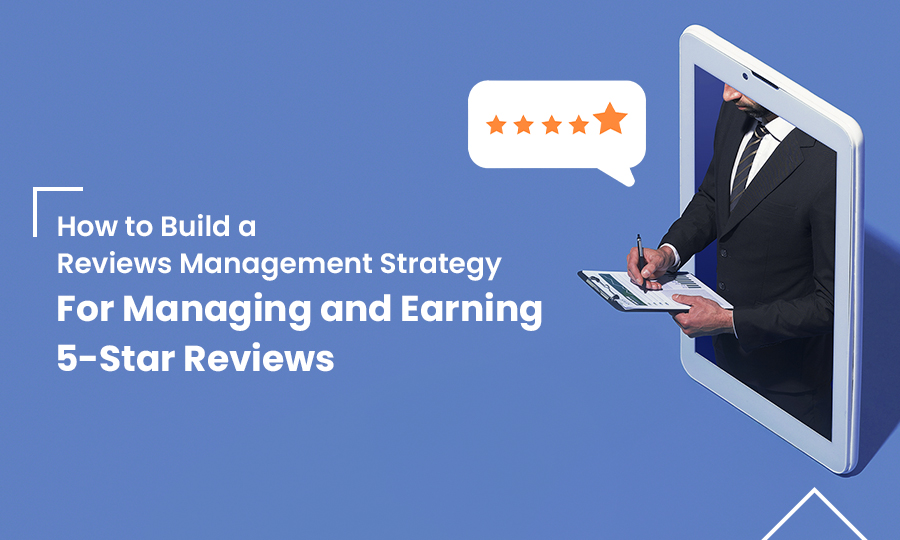Your customers are talking about your business online right now. Each day, potential customers are making decisions about whether they can trust your business by scrolling through discussions on review management strategy, reading Google reviews, and exploring your social media channels. The problem is, the vast majority of businesses are just reacting instead of proactively managing their online reviews. Especially when 17% of people always check online reviews before buying a product, as per the survey conducted by Statista in the year of 2017.
A strategic approach to online review management gives you the power to manage customer feedback to use it to leverage your most successful marketing tool. When you implement effective review management software and develop systematic processes, you will turn satisfied customers into brand ambassadors and respond to negative feedback before it can hurt your reputation.
This comprehensive guide will show you proven strategies to build and implement a strong review management strategy that enhances customer satisfaction, builds a positive online presence, and catalyzes business growth across multiple review websites.
What Is Online Review Management?
Online review management refers to the systematic process of monitoring, responding to, and utilizing customer reviews or feedback across digital platforms. This includes monitoring reviews on Google, Yelp, and Facebook, as well as from any other review sites that are specific to your industry, as well as creating initiatives to obtain positive reviews and rebuttals of negative ones promptly.
What is a Review Management Strategy?
A review management strategy allows your business to define processes for effectively managing reviews across a variety of ways while maximizing value from every customer touch point.
Components of an Effective Online Review Management Strategy
Your foundation needs comprehensive monitoring systems that will track mentions on review sites, social networks, and industry sites. These systems will notify you in real-time when customers leave feedback, so that you have quick response times and your customers know you care about their satisfaction.
Advanced review management software now connects to multiple data sources, with a centralized dashboard that will allow you to manage reviews more effectively while spotting trends in customer sentiment.
Difference Between Reactive and Proactive Review Management
Reactive management waits until there are issues to deal with, and then reacts by trying to contain the damage when a negative review is uploaded online. This responsive approach is often not good enough to keep the customer relationship intact, and can lead to lost business as well.
Proactive management strategy involves ensuring that issues do not arise proactively, encouraging happy customers to share their positive experiences, and contemplating the service delivery requirements of organizations to provide a great customer experience for each of their customers, all of the time, and across all touchpoints.
Overview of Platforms Where Online Reviews Matter Most
Google Reviews have the highest authority in local search and have dominated local search results, and they will impact purchase decisions more than any other review platform. Yelp is still important for restaurants, retail, and service-based businesses, and Facebook reviews fit directly into social media marketing.
Newer industry-specific review platforms, such as TripAdvisor for the hospitality industry or Healthgrades for health care providers, may require specialized attention. Ultimately, your target audience will determine which review sites warrant professional focus and priority for placement within your broader marketing strategy.
The Role of Review Management in Overall Digital Marketing
Review management should be an overarching strategy attached to all of your digital profiles, from search engine optimization to social media engagement. Positive reviews improve your online reputation and reputation capital, as they provide fresh blog content for search engine bots. Customer reviews act as marketing collateral and guide prospective customers through their buying journey. Connecting review management to customer relationship management (CRM) systems will provide feedback loops to enhance your service delivery and build strong customer relationships.
Looking to enhance your brand’s credibility? Review management services can help you monitor customer feedback, respond promptly, and safeguard your online presence, ensuring strong relationships with your audience across various review platforms.
How Review Management Strategy Impacts Your Business Growth
Management of strategic review directly relates to revenue by connecting online reputation to financial results through various linked pathways.
- Conversion
Positive online presence elevates potential customer conversion rates since potential customers trust businesses with better review profiles. Reviews provide social proof and, therefore, diminish purchase anxiety for prospective customers and can also speed up the decision-making timelines.
- Retention
Managing your reviews enhances your relationship with existing customers by proving your concern for their satisfaction. Publicly responding to concerns demonstrates to potential customers that your team cares about delivering a good experience.
- Visibility
Search engines favor businesses that have a healthy ‘review profile’, increasing local search placement. Your new customer feedback indicates relevance to search engines. New reviews can help improve your visibility the next time a customer searches for your service.
- Feedback
Customer feedback is excellent for building service improvements and making decisions about new products or services. The feedback loop allows you to spot emerging trends and opportunities that allow for innovation and competitive advantage.
- Crisis Management
By leveraging systematic review tracking and monitoring, you can respond to negative feedback quickly before the customer issue escalates into a crisis. By countering negativity, your brand reputation is protected, so you can show a potential customer that your crisis management process was professional.
- Branding
Consistent management of your reviews builds your brand image and values in every possible digital experience. On top of it all, positive reviews become genuine content marketing that is much more compelling than traditional messages.
Proven Strategies for Building an Effective Online Review Management Strategy
To develop meaningful review management sustainably, you must employ numerous interconnected strategies systematically to achieve monitoring, engagement, growth, and acquisition across multiple touchpoints.
- Foundations & Setup
Building robust foundations makes sure your review management strategy runs smoothly and reduces the risks of missing vital, meaningful review management opportunities across all platforms where customers leave feedback.
- Establish a Monitoring System

“Your Eyes and Ears Across the Digital Landscape”
Implement pending monitoring solutions that will track mentions across Google Reviews, social media, and other industry-specific review sites.
Build automated alerts and notify your team as soon as reviews come in, allowing them to react quickly and display a concern for the customer.
Advanced monitoring can include sentiment analysis and trend monitoring, which can help you get a sense of the concerns of the customers before they become significant issues.
It can also integrate with customer relationship management systems and provide a full history of customer interaction that can be referenced to respond to reviews in a more personalized manner.
Provide full coverage across all digital touchpoints–where your reputation is most significant.
Key Implementation Steps:
- Configure alerts for Facebook, Yelp, TripAdvisor, Better Business Bureau, and industry-specific platforms.
- Set up keyword monitoring for brand mentions, competitor comparisons, and service discussions.
- Establish real-time alerts for high-traffic businesses or daily digest reports for smaller operations.
- Create automatic escalation for reviews containing trigger words like “lawsuit,” “discrimination,” or “safety.”
- Integrate monitoring data with customer relationship management systems for complete interaction histories.
- Create Request Process
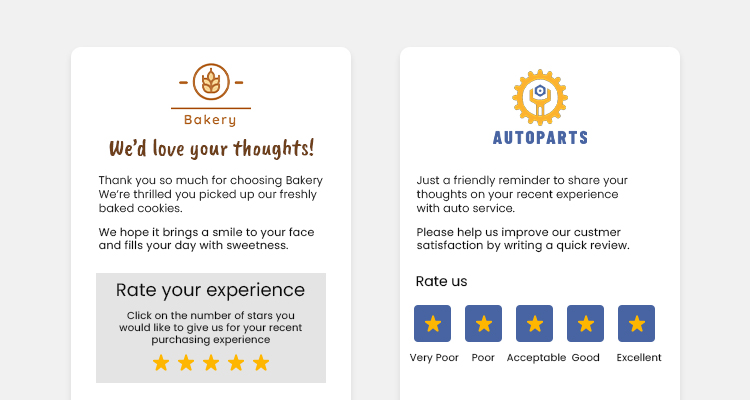
“Turn Happy Moments Into Lasting Testimonials”
Create systematic methods of requesting reviews to delight customers at the best moments in the customer journey.
Probably best to strategically time after a positive interaction happens, a successful project completion, a phenomenal service experience, etc.
Create opportunities through email sequences, text messages, and in-person opportunities that are systemic and do not come off in a pushy sales manner.
Personalize requests in consideration of age preferences and previous interactions to get the best chance of response while continuing to build authentic relationships with your customers.
Learn the science of perfect timing and personalizing requests that come off simply as a request rather than a sales function.
Optimization Strategies:
- Time requests strategically: service businesses immediately after completion, retail 3-7 days post-purchase.
- Create email templates with 30-40% open rates using compelling subject lines and spam-free language.
- Design mobile-friendly forms with pre-populated information and direct platform links.
- Implement A/B testing for messaging approaches, emotional appeals, and formatting styles.
- Track response rates by customer segment to refine targeting and personalization efforts.
- Optimize Google Business Profile
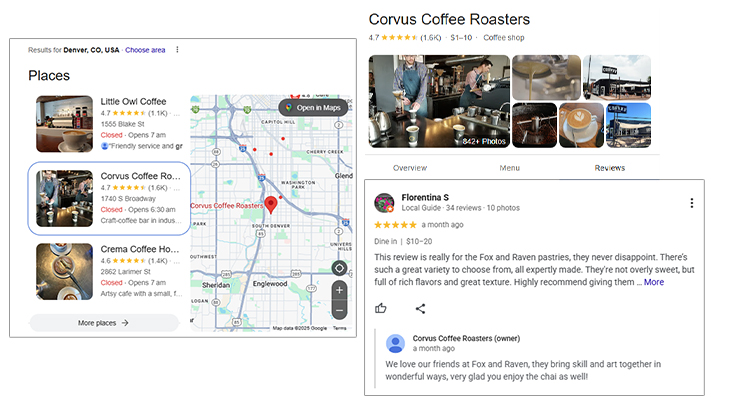
“Your Digital Storefront That Never Sleeps”
Make your Google Business Profile a review generation machine by optimizing everything you can for customer involvement.
Upload relevant images in high quality, keep your business information accurate, and always respond to your customers’ questions.
Use Google Posts to update and to promote, to give updates on current promotions, and even show behind-the-scenes content to drive customer healthy interactions.
Turn on messages and include them as an additional communication channel for customers, and make yourself accessible and responsive to customers to show potential customers that you care.
Maximize your local search visibility through comprehensive profile optimization and active engagement.
Profile Enhancement Tactics:
- Complete all sections: hours, services, payment methods, accessibility features for improved search ranking.
- Upload fresh professional photos weekly, showcasing the team, workspace, products, and satisfied customers.
- Utilize Google Posts for customer success stories, milestones, promotions, and educational content.
- Monitor Q&A sections actively, treating each question as an opportunity to showcase expertise.
- Enable messaging features for additional customer communication channels and responsiveness demonstrations.
- Multi-Platform Approach

“Cast Your Net Wide, Catch More Opportunities”
Don’t just stop at Google and make sure you are engaged in a variety of review sites that are relevant to you, industry, and market.
Your business is likely in multiple segments with different search behaviors, and a tailored engagement strategy that acknowledges and follows each review site’s guidelines.
So, it is important to develop a strategy that engages each platform’s various unique engagement features while managing your overall voice and message.
Observe your competitors on the platforms as well and see how you stack up against your industrial best practices.
Use common sense when considering which platforms to participate in. Better to have a strategic view on the type of engagement you desire to enforce rather than be blind to dozens of unproductive sites.
Platform Strategy Essentials:
- Research demographic preferences: millennials prefer Yelp/social media, older customers trust BBB ratings.
- Focus on 5-7 key platforms rather than spreading efforts too thin across numerous sites.
- Understand platform algorithms: Yelp values reviewer activity, and TripAdvisor prioritizes recent reviews.
- Develop content calendars for platforms supporting regular posting and community engagement.
- Monitor competitor performance to identify opportunities and benchmark against industry standards.
- Engagement & Response
Engagement to build relationships with your customers via active engagement moves passive audience review monitoring into an active, ongoing relationship building and even brand loyalty. It shows your commitment to professionalism and service excellence through the employment of passive monitoring before relationship development begins upon receiving initial engagement.
- Rapid Response System
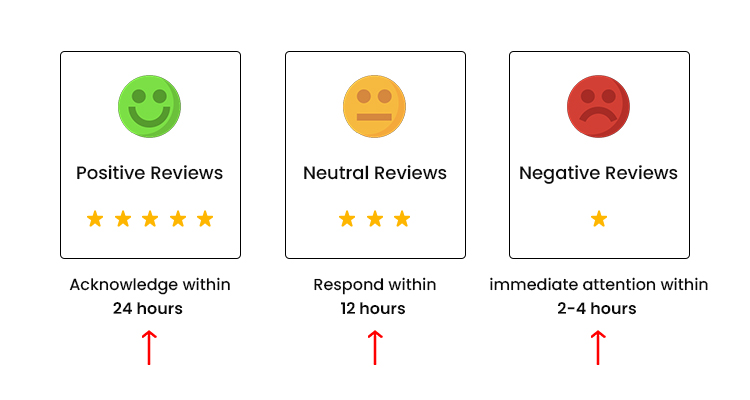
“Speed Kills… Complaints Before They Spread”
Adopt response standards that ensure all reviews are acknowledged within 24 hours, showing a commitment to customer feedback/discussion.
Timely responses indicate to potential customers you value communication and take customer concerns seriously.
Create response templates that maximize personalization while maintaining consistency in tone and message.
Train team members to discern which reviews should be escalated for an immediate response and which standard operating procedures can be applied.
Speed and systematic escalation procedures will stop small issues from becoming reputation disasters
Response Time Framework:
- Positive reviews: acknowledge within 24 hours to maintain engagement momentum.
- Neutral reviews: respond within 12 hours to address concerns before they escalate.
- Negative reviews: immediate attention within 2-4 hours to prevent viral spread.
- After-hours monitoring: smartphone alerts or rotating team responsibilities for 24/7 coverage.
- Performance tracking: create a dashboard to monitor response times across team members and platforms.
- Train Your Team
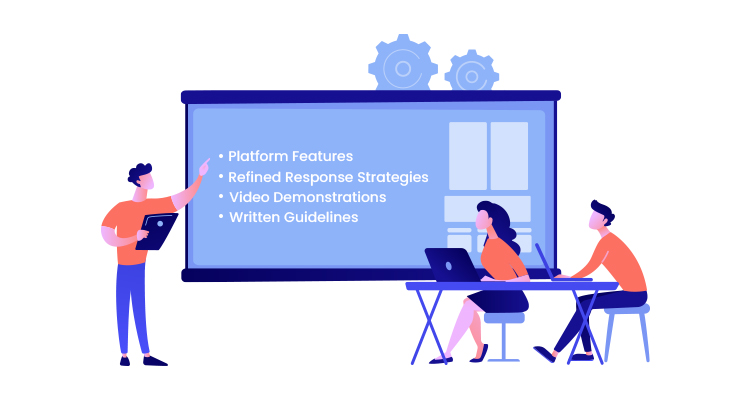
“Every Employee Is Your Reputation Ambassador”
Service staff should learn and understand best practices for review management. Encourage reviewing and re-evaluating experiences and proactively responding to customers’ problems.
Training sessions should occur regularly and cover response-style options, escalation procedures, and other platform-specific dimensions that have to adhere to individual review sites’ policies.
Develop role-playing activities that simulate various review situations from a very positive review to a very negative or even serious complaint. Clearly define the accountability to make review management everyone’s responsibility.
A solid training program develops confident ambassadors who are great at building and enhancing relationships with customers.
Training Program Components:
- Monthly workshops covering emerging trends, platform features, and refined response strategies.
- Certification programs for customer-facing roles, testing response knowledge, and de-escalation techniques.
- Multi-format materials: video demonstrations, written guidelines, and interactive simulations.
- Peer mentorship programs pairing experienced team members with newcomers for real-scenario guidance.
- Recognition programs reward employees who generate positive reviews through exceptional service.
- Address Negative Reviews
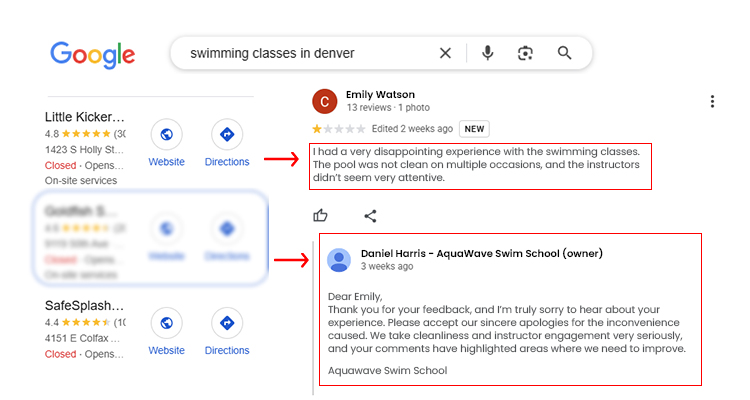
“Turn Critics Into Converts With Grace”
Use negative reviews as chances to showcase great customer service and problem-solving ability.
Respond professionally to all criticism, while admitting to legitimate concerns and specific next steps to resolve the issue.
When relevant, take the conversation offline where you can address the customer and their concerns privately and provide your contact information in case a follow-up conversation is needed.
Think of negative reviews as a learning opportunity to better services and prevent the same issues from recurring with other customers.
Managing negative reviews professionally makes your commitment to customer satisfaction visible to the public.
HEARD Method Implementation:
- Halt other activities to focus completely on the customer’s concern.
- Engage with empathy and understanding without defensive reactions.
- Apologize sincerely when appropriate while avoiding unnecessary fault admission.
- Respond with specific solutions, including timelines and contact information.
- Deliver on promises with follow-up communication and systematic issue tracking.
- Crisis Management Plan
“When Storms Hit, Be the Calm Captain”
Create robust processes for dealing with reputation crises that threaten your business reputation and customer relationships.
Recognize the need for senior leadership engagement after factoring in necessary escalation procedures where reactions to negative reviews may spiral out of control or represent systematic problems.
You’ll want to have comments that give you time to look into the problem while also showing immediate concern for the customer’s well-being.
You should also have templates to assist in communications for various situations, including service problems and misconduct, so you and your colleagues are able to respond appropriately and consistently.
Creating thorough crisis preparedness prevents reputation catastrophes with systematic response protocols.
Crisis Management Infrastructure:
- Severity levels from individual complaints to PR disasters with specific response timelines
- 24/7 response capabilities, including emergency contacts and pre-approved social media responses
- Professional relationships with reputation management experts, legal counsel, and PR specialists
- Communication playbooks covering internal procedures, external messaging, and post-crisis recovery
- Continuous monitoring through social media listening tools and news alerts for sentiment tracking
- Growth & Optimization
Strategic optimization elevates a simple review management from that of a simple historical record to one that serves as a growth engine that leverages customer feedback as fuel for ongoing improvement and competitive advantage.
- Use Feedback for Improvement
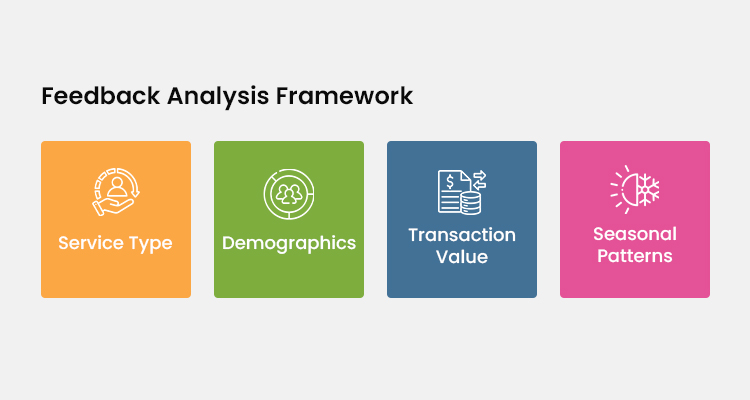
“Customer Voices Are Your Innovation Compass”
Assess customer feedback trends regarding consistent themes and opportunities for improvement that will better overall business performance.
Create systematic processes that allow for the sharing of the insights obtained from reviews with appropriate teams, starting from operations to product development. Implement changes informed by customer feedback and communicate those changes to let customers know you appreciate their input.
Assess how operational changes relate to the sentiment in reviews and customer satisfaction over time.
Leverage customer insights into operational improvements that lead to sustainable business growth.
Feedback Analysis Framework:
- Monthly cross-functional team sessions examining trends and identifying improvement opportunities.
- Categorization systems sort reviews by service type, demographics, transaction value, and seasonal patterns.
- Customer advisory boards are comprised of frequent reviewers for deeper insights and consultation.
- Feedback loop processes update customers on changes made based on their suggestions.
- Performance tracking, connecting operational changes to improved review sentiment over time.
- Leverage in Marketing
“Let Your Customers Sell For You”
Utilize positive reviews in your marketing materials, your website content, and your social media channels to provide extra customer testimonials.
Create case studies from individual positive reviews to share in a marketing way that reflects your decision-making process and future customers’ success stories.
Share review content in your advertising campaigns, email marketing, and sales presentations as authentic social proof. Create a process to develop permission to use customer reviews in marketing forums while considering their privacy options.
Authentic customer testimonials outshine traditional advertising while providing real community engagement.
Marketing Integration Strategies:
- Website showcase sections with filtering options for visitors to find relevant testimonials.
- Video testimonials from exceptional written reviewers using professional production services.
- Social media content calendars featuring customer reviews alongside behind-the-scenes content.
- Comprehensive case studies demonstrating problem-solving processes and measurable customer outcomes.
- Permission systems respecting privacy preferences while maximizing marketing content opportunities.
- Monitor Competitors
“Know Your Enemy, Know Your Opportunity”
Monitor competitor reviews to find benchmarks within the industry, service gaps, and differentiation opportunities to guide your competitive strategy.
Look for what customers praise about the competitors and what complaints they have repeatedly made in their negative reviews.
Use this competing intelligence to optimize your offer while not falling into the same traps that your competitors have in regards to the customer experience and product/service offering. Find potential opportunities where the competitors’ service/product has been criticized consistently. This will provide a chance for you to promote that you are a better option.
Strategic competitive intelligence holds the potential to identify opportunities while you avoid the historic mistakes of your industry competitors.
Competitive Analysis Essentials:
- Performance dashboards tracking competitor review velocity, response rates, and sentiment trends.
- Response strategy analysis, identifying best practices and mistakes to avoid.
- Customer demographic studies reveal underserved market segments and service gaps.
- Alert systems for significant competitor positive or negative attention, enabling rapid responses.
- Competitive advantage documentation highlighting superior service delivery and customer outcomes.
- Use Automation Tools

“Work Smarter While Staying Human”
Implement review management software that automates repetitive tasks while retaining the personal touch in their customer interactions.
Automated systems can schedule review requests, send follow-up messages, and identify urgent reviews that need a timely response.
Pick solutions that will work with a variety of systems that already exist in your business, ranging from customer databases to marketing tools, to make workflows easy.
Combine enough automation with human intervention, if possible, to create real and authentic communication that cultivates real and authentic relationships with your customers.
Smart automation will help your efficiency while still providing a human touch that engages your target customers with what they value most.
Automation Implementation Guide:
- Choose platforms offering customizable workflows based on customer behavior and interaction preferences.
- Deploy AI features for sentiment analysis and automatic categorization by urgency and topic complexity.
- Configure escalation systems to alert management for specific keywords or rating thresholds.
- Integrate with CRM systems, ensuring review interactions become part of comprehensive customer profiles.
- A/B test automation performance optimizing message timing, content variations, and personalization levels.
Related: The Complete Guide to Google Review Automation for Businesses
- Analyze Performance
“Measure What Matters, Improve What Counts”
Identify key performance indicators (KPIs) that assess the effectiveness of review management practices, such as response times, sentiment analysis trends, and impacts on conversion.
Frequent analysis helps determine what methods produce the most effectiveness as well as where to focus improvement. Build dashboards that display an overview volume over time, average rating trends, response-rate monitoring, and customer satisfaction measures over time.
Using key performance data to evaluate the investment in review management and mark the return on investment (ROI), communicates a greater story to stakeholders.
Using data-driven insights and analysis transforms review management from serendipity to tactical business use.
Performance Measurement Framework:
- Leading indicators: request delivery rates, customer engagement, and service-to-review timeframes.
- Lagging indicators: rating trends, volume growth, competitive rankings, and revenue correlation.
- Attribution tracking connects positive reviews to website conversions and actual sales.
- Executive dashboards summarizing review performance alongside key business metrics.
- Benchmark comparisons with industry standards set realistic improvement targets.
- Review Acquisition
The consistent use of acquisition strategies can increase the number of positive review volumes and preserve the authenticity and compliance with platform policy over multiple channels.
- Incentive Program (with caution)
“Reward Honesty, Not Just Praise”
Expand your incentive program to motivate review posting, based upon the respective review platform’s guidelines, to ensure that reviews remain authentic.
Consider providing enhancements or additional access in addition to tokens of appreciation, as possible incentives to reward customers for participating without creating the perception to customers that they could be purchasing a positive review.
It’s important that the incentive program follows the guidelines of the particular review site, as the business could face fines or account challenges if non-compliant.
The incentive program should reward customers appropriately from an ethical point of view, and stick with a reward for honest feedback, versus only positive feedback.
The most important aspect of the incentive program is to create real participation that people value while receiving the appropriate level of trust and authenticity related to the review platform.
Incentive Program Structure:
- Tiered rewards for detailed, helpful reviews rather than simple star ratings, encouraging comprehensive feedback.
- Non-monetary incentives: exclusive events, early service access, or customer spotlight features.
- Contest campaigns during slower periods generate increased review volume at strategic times.
- Partnership programs with complementary businesses offering cross-promotional incentives.
- Conversion tracking and cost-per-review analysis ensure measurable returns on investment.
- Review Gating & Filtering (note platform policy compliance)
“Guide the Journey, Don’t Force the Destination”
Employ ethical review management practices that help guide satisfied customers into public spaces while addressing customer issues privately for unsatisfied customers.
Implement feedback collection processes that allow customers to express their experience before they are allowed to write a public review.
Utilize internal feedback collection processes to resolve an issue before it turns into a negative online review. Maximize the opportunity to acquire positive online reviews while ensuring your practices meet the standards of the platform’s policy.
Ethical filtering maximizes positive outcomes but respects platform policies and relationships you have developed with customers.
Review Gating Best Practices:
- Two-stage feedback systems collect private feedback before public review invitations.
- Satisfaction thresholds triggering different sequences: 4-5 stars get review invites, lower ratings receive service outreach.
- Customer service recovery protocols are transforming dissatisfied customers into advocates through exceptional resolution.
- Communication preference respects avoiding aggressive solicitation that damages relationships or violates terms.
- Effectiveness tracking through private issue resolution rates and internal-to-public review conversion metrics.
Common Mistakes to Avoid in Review Management
A lot of contractors undermine their review management efforts by making mistakes that could have been avoided, and have the reverse effect on customer relationships and reputation management.
- Ignoring Complaints
Not responding to a negative review is an indication that the business does not care about either the customer experience or their reputation that they have built. By doing nothing, the story the business is telling customers is that they don’t care about the complaint, leaving consumers bewildered and further amplifying the criticism.
- Faking Reviews
Falsifying positive reviews not only violates business listing policy but also puts your entire account at risk of suspension, thus nullifying your reputation management efforts. False reviews, no matter how convincing, are easily detected by the discerning customer and ultimately erode credibility.
- Generic Response Templates
Using the same responses on multiple reviews can come off as inauthentic and show a lack of real care for the customer. Pre Written templates fail to address unique concerns and lack opportunities for authentic engagement.
- Timeliness
Slow responses to customer feedback can indicate poor customer service and a lack of willingness to address concerns. A slow response enables customers to wallow in negative feelings and also provides proof that the company doesn’t care about their feedback.
- Arguing with Customers
Defensive or combative reactions towards criticism create public relations catastrophes that repel potential customers. A professional reaction showing understanding regarding concerns builds trust even when responding to unfair criticism.
- Ignoring Positive Reviews
Ignoring positive reviews means you are missing opportunities to build relationships with your customers and create repeat customers. Recognizing satisfied customers in a public way shows them appreciation for their business while encouraging others to share their experiences.
Conclusion
A universal review management strategy helps to convert customer feedback into your most promising growth strategy. When done consistently, these tested strategies will turn satisfied customers into brand ambassadors, while also addressing negative feedback quickly and professionally.
Savvy companies know that managing online reviews is an active, ongoing process rather than a part-time job. Their customer relationships depend on consistently engaging across numerous review sites, social media, and direct feedback from customers who can see they genuinely care about their satisfaction.
Consider using an experienced company in white-label reputation management services to provide extra support to your internal resources. A professional reputation management service will enable you to monitor coverage on every review site while still giving your customers the personalized attention they deserve, while your team will spend time and energy providing a magnificent experience that inspires a positive review.

